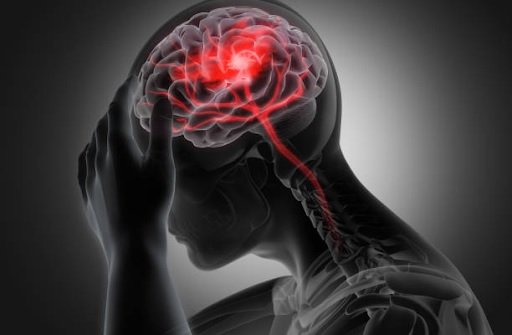🧠 Learn to recognize key stroke symptoms⚠️. Be aware of early warning signs! Time is brain, save a life! ⏰❤️🚑 #StrokeAwareness #Health
Stroke
A stroke occurs when the blood supply to a part of the brain is interrupted or reduced, causing brain cells to die. This interruption can lead to sudden neurological impairment, affecting mobility, speech, and other critical functions. Understanding stroke symptoms is vital for early recognition and timely intervention, as it can significantly influence recovery outcomes.
Significance of recognizing early warning signs
Recognizing early warning signs is crucial, as it enables timely interventions that can prevent further escalation of issues. By identifying potential problems early, individuals can take proactive measures to address concerns, ultimately improving overall outcomes. Time is of the essence when dealing with strokes; every minute counts, making awareness and education imperative for everyone.
A stroke is a medical emergency that occurs when blood flow to a part of the brain is interrupted, leading to potential brain damage. This interruption can result from a blocked artery (ischemic stroke) or a burst blood vessel (hemorrhagic stroke), both requiring immediate medical attention.
A brief discussion on the types of Stroke
There are primarily two types of strokes:
- Ischemic Stroke: This type is caused by blocked arteries, often due to blood clots or fatty deposits. These strokes are the most common, accounting for approximately 87% of all strokes.
- Hemorrhagic Stroke: This occurs when a blood vessel in the brain leaks or ruptures, leading to bleeding in or around the brain. This type can be further categorized into subarachnoid haemorrhage and intracerebral haemorrhage.
Understanding these distinct categories is crucial for effective diagnosis and treatment strategies. Knowing the type of stroke can determine the urgency and nature of the medical response needed.
Explanation of how a Stroke interferes with brain function
A stroke disrupts normal brain function by interrupting blood flow, depriving neurons of oxygen and nutrients. This loss can lead to cellular damage or death, resulting in impaired motor skills, speech difficulties, and cognitive challenges. The extent of these effects often depends on the location and size of the stroke within the brain.
Recognizing the Key Symptoms of a Stroke
- Sudden numbness or weakness on one side of the body
An abrupt loss of sensation or strength, particularly on one side of the body, may indicate a serious medical condition. This symptom requires immediate attention, as it could signal a potential stroke or other neurological issue. - Sudden confusion or trouble understanding
A sudden onset of confusion can lead to difficulty in comprehending information. This unexpected mental fog often causes frustration and uncertainty, making it challenging to process thoughts or engage in conversations effectively. This symptom may be mistaken for something less severe, such as stress or fatigue, but it’s essential to take it seriously.
Sudden trouble seeing in one or both eyes
Experiencing unexpected difficulty in vision, whether in one eye or both, can be alarming. This sudden impairment may indicate an underlying health issue and should prompt immediate consultation with a healthcare professional for evaluation.
Sudden severe headache without a known cause
An abrupt, intense headache with no identifiable origin can be alarming. Individuals experiencing this symptom should seek medical attention promptly, as it may signify underlying health issues requiring immediate evaluation and treatment to ensure safety and well-being.
Other related symptoms
Symptoms associated with stroke may include fatigue, persistent pain, mood swings, cognitive difficulties, and changes in appetite or sleep patterns. Recognizing these additional signs can aid in early identification and effective management of the underlying issue.
Recognition of face drooping or numbness
The FAST method is a simple way to recognize stroke symptoms quickly:
- F (Face): Ask the person to smile. Does one side of the face droop? This can be a key indicator of a stroke.
- A (Arms): Ask the person to raise both arms. Does one arm drift downward? This weakness can be a sign of neurological distress.
- S (Speech): Ask the person to repeat a simple phrase. Is their speech slurred or strange? This can indicate that the part of the brain responsible for language is affected.
- T (Time): If you observe any of these signs, it’s time to call emergency services immediately. Remember, every second counts when dealing with a stroke.
The Importance of Acting Fast
Understanding stroke symptoms is vital, but knowing how to act is equally important. If you or someone else exhibits any of the symptoms outlined above, do not hesitate. Call emergency services immediately. Quick action can lead to better recovery outcomes and save lives. Medical professionals can provide interventions that significantly reduce the risk of permanent damage.
Additionally, awareness of stroke risk factors can empower individuals to make lifestyle changes that may reduce their likelihood of experiencing a stroke. Factors such as high blood pressure, diabetes, high cholesterol, smoking, and a sedentary lifestyle can all contribute to stroke risk. Regular check-ups with healthcare providers can help monitor and manage these risks effectively.
Recognizing the key symptoms of stroke can save lives. The quicker a stroke is identified and treated, the better the chances for recovery. Stay informed, be aware of the warning signs, and act swiftly. Remember, time is brain!
Read also: https://lakersmag.com/
